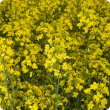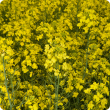Services
Search in Services
Filter services by topic
- (-) Remove Grains research & development filter Grains research & development
- Crops (32) Apply Crops filter
- Grains (32) Apply Grains filter
- (-) Remove Production & postharvest filter Production & postharvest
- Canola (23) Apply Canola filter
- Plant nutrition (15) Apply Plant nutrition filter
- Fertiliser (15) Apply Fertiliser filter
- Sowing (10) Apply Sowing filter
- Harvesting (5) Apply Harvesting filter
- Wheat (4) Apply Wheat filter
- Lupins (2) Apply Lupins filter
- Soil compaction (1) Apply Soil compaction filter
- Soil acidity (1) Apply Soil acidity filter
- Soil constraints (1) Apply Soil constraints filter
- Soils (1) Apply Soils filter
- Water repellence (1) Apply Water repellence filter
- Pulses (1) Apply Pulses filter
- Soil management (1) Apply Soil management filter
- Breeding & varieties (1) Apply Breeding & varieties filter
- Chickpeas (1) Apply Chickpeas filter
- Barley (1) Apply Barley filter
- Climate, land & water (1) Apply Climate, land & water filter
- Genetic modification (1) Apply Genetic modification filter
- Liming (1) Apply Liming filter
- Postharvest (1) Apply Postharvest filter






